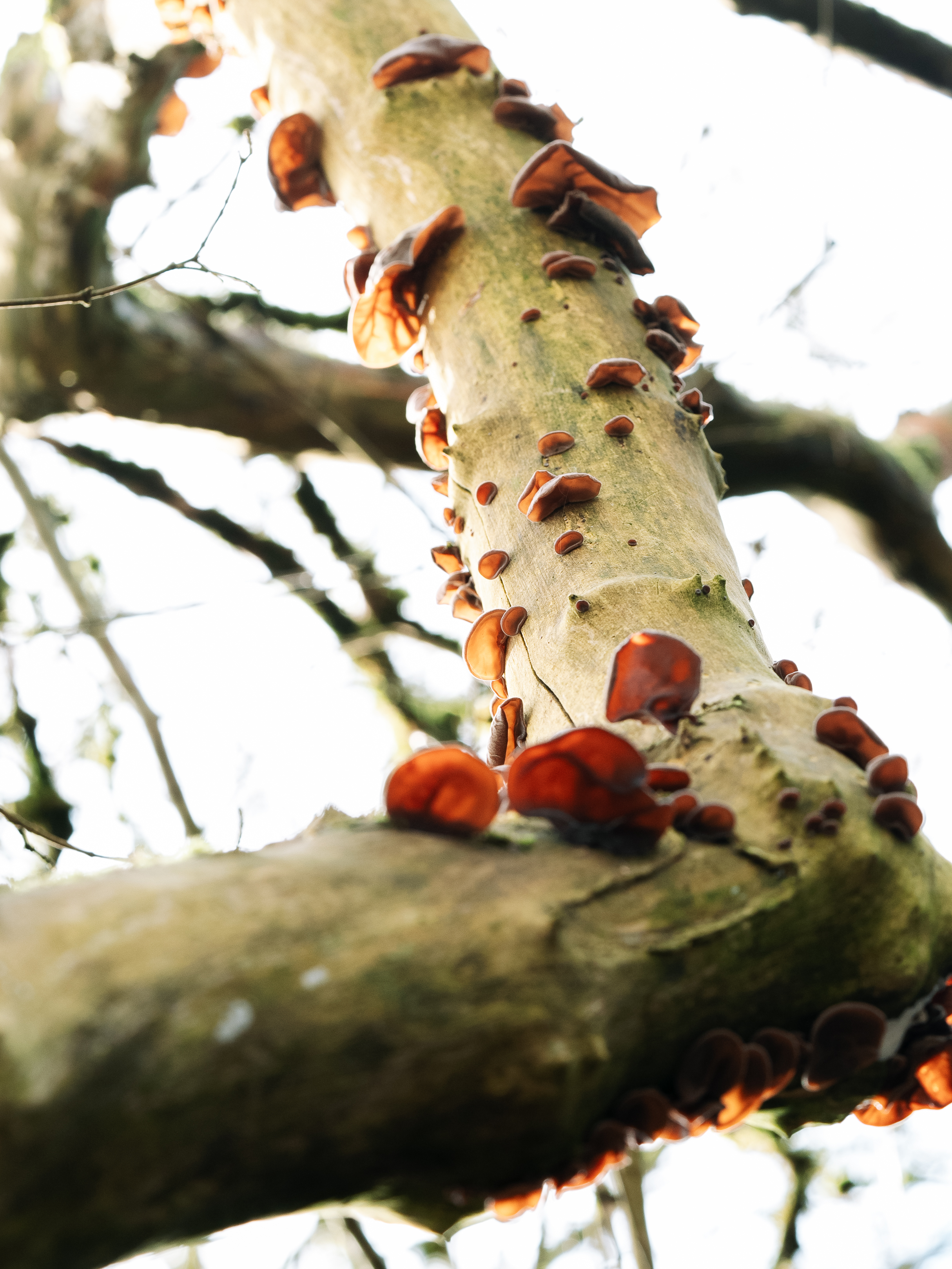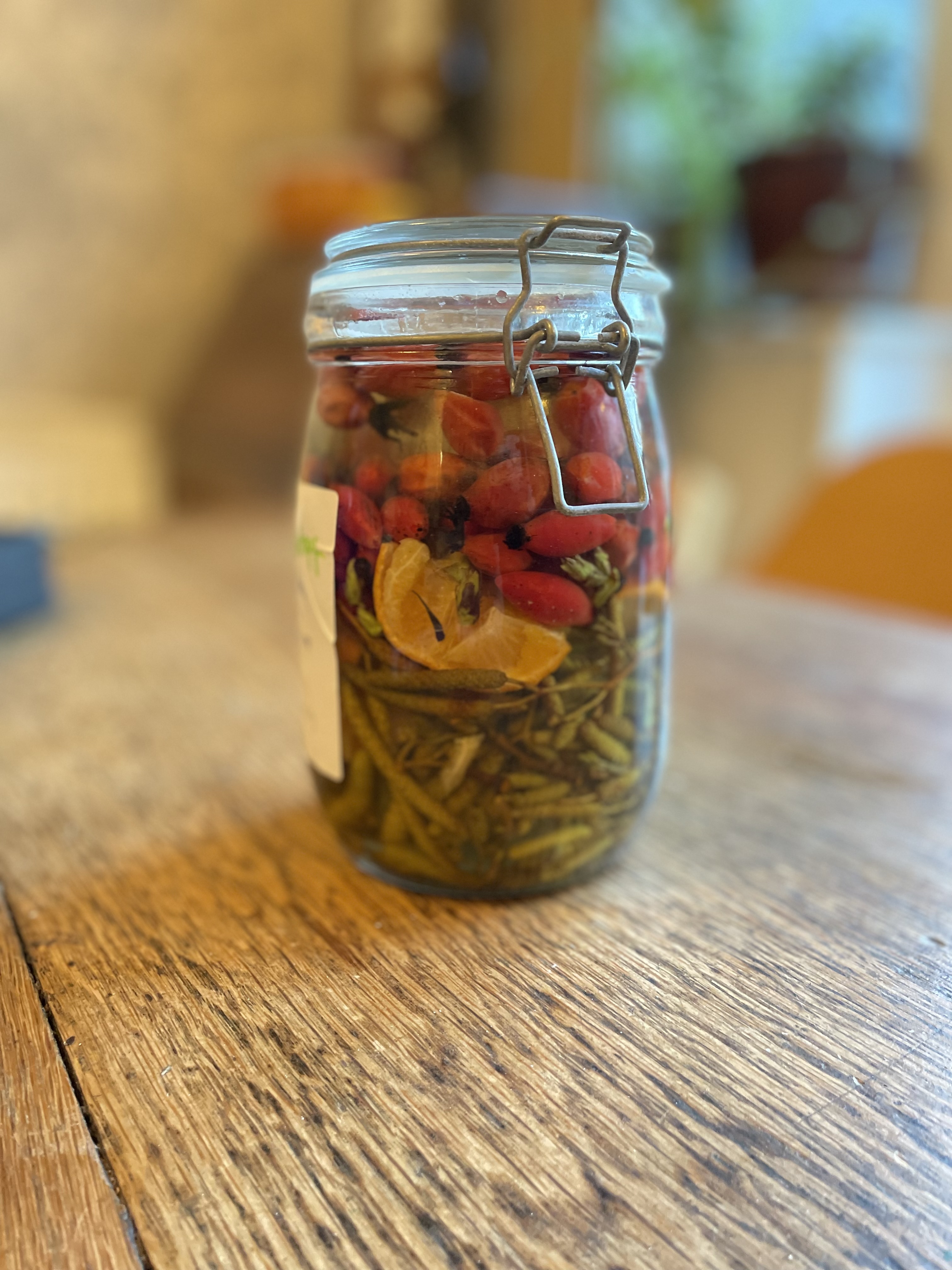
What Will I Find On A Forage Box Workshop?
One of the questions we get asked a lot is “what will we find on this event?” or “will we find X on this event?”. As advertised on our event listings and in various other places around our website, our events focus on the ‘Four F’s of Foraging’, which is a catchy way of referring to fungi, fruit, flowers and foliage. What this means is that we aim to find a huge array of all sorts of species, but hyper-seasonality is always at the forefront of every workshop - expect more greens in spring, expect more mushrooms in autumn - but, of course, predicting what we will find is nigh on impossible. There are simply too many variables and species to find out there!
To excite you about what it is that you might discover on your event with Forage Box, we thought it was worth sharing a combined species list from one of our regular venues, taken from across one calendar year. This lengthy list is every single thing we have looked at across all four seasons in one location, which doesn’t even include the less interesting things we skipped past or forgot to note down!
The list:
Amethyst deceiver
Angelica
Artists conk
Bay bolete
Beech
Beech milkcap
Beefsteak fungus
Birch milkcap
Birch polypore
Bistort
Blackening brittlegill
Blackthorn
Blusher
Blushing wood mushroom
Bramble
Branched oyster
Broadleaf Plantain
Brown Mottlegill
Brown rollrim
Buttercap
Candlesnuff fungus
Charcoal burner
Cherry
Chestnut
Chicken Of The Woods
Chickweed
Chinese crabapple
Cleavers
Clouded agaric
Club foot
Clustered bonnet
Collared earthstar
Common bonnet
Common funnel
Common hogweed
Common puffball
Common sorrel
Cow bolete
Cow parsley
Crabapples
Crimson waxcap
Cuckoo flower
Damson
Dandelion
Deceiver
Deer shield
Dock
Dogs mercury
Dryads saddle
Earthball
Elder
Elfin saddle
Fairy inkcap
False turkeytail
Flowering currant
Fly agaric
Fools watercress
Forget-me-not
Garlic mustard
Giant polypore
Giant puffball
Golden waxcap
Gorse
Grey-spotted amanita
Ground elder
Hairy bittercress
Hawthorn
Hen of the woods
Herb robert
Himalayan balsam
Honey fungus
Honeysuckle
Hops
Hosta
Japanese knotweed
Jelly baby
Jelly ear
King Alfreds cake
Lime
Lords and ladies
Macro mushroom
Magnolia
Meadow puffball
Meadow waxcap
Meadowsweet
Miller
Mugwort
Mulberry
Oak
Opposite-leaf golden saxifrage
Orange peel fungus
Parrot waxcap
Pestle puffball
Pine
Pineapple weed
Poppy
Porcini
Purple brittlegill
Raspberries
Red cracking Bolete
Ribwort plantain
Rooting bolete
Rose
Rowan
Scarlet elf cup
Scarlet waxcap
Shaggy bracket
Shaggy inkcap
Shaggy parasol
Shaggy scalycap
Sheep sorrel
Sickener
Snowy waxcap
Spring fieldcap
St Georges mushroom
Stagshorn sumac
Stinging nettle
Stinkhorn
Stinking brittlegill
Sulphur tuft
Sweet woodruff
Tawny funnel
Three-cornered leek
Trooping funnel
Ugly milkcap
Velvet shank
Vetch
Water pepper
Wavy bittercress
Wild apple
Wild garlic
Wild strawberry
Wood avens
Wood mushroom
Wood sorrel
Yellow swamp brittlegill
Yew
Turkeytail
That’s quite the roll call, isn’t it?! Now, naturally, we cannot guarantee that you will find every single one of these if you attend every event at this location next year, but there is certainly a good chance, and you may also end up finding some new ones to add to this list. Part of foraging is the adventure, the uncertainty about what you’ll find and the hyper-seasonality of those species that you do. So, to those unsure about what discoveries they will make, please remember this when booking: ‘It is a safari, not a zoo’.






